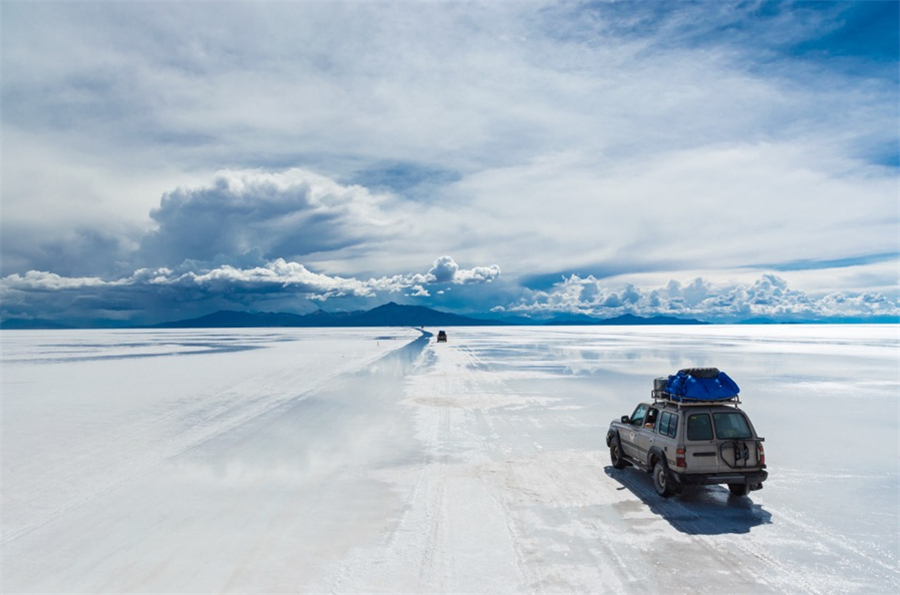Germany secures access to world’s second-largest lithium deposit

Germany and Bolivia today sealed a partnership for the industrial use of lithium, a key component in the batteries that power electric cars and cell phones.
ACI Systems will work with state-owned Bolivian Lithium Deposits (YLB) on installing four lithium plants in the Salar de Uyuni salt flats, which hold the world’s second-largest lithium deposit.
The joint venture also plans to build a factory for electric vehicle batteries in the country.
While more than 80% of the lithium extracted will be exported to Germany, the company is said to be in talks with other European companies.
The partners expect to produce up to 40,000 tonnes of lithium hydroxide per year, beginning in 2022, over a period of 70 years.
President Evo Morales sees a prosperous future for the impoverished nation, pinning his hopes on the rapid rise in the global price of the so-called white petroleum.
Bolivia holds millions of tonnes of untapped lithium reserves. The Salar de Uyuni salt flats alone contains nine million tonnes of lithium, or around 25% of the world’s known reserves.
Salt flats in the highlands of Bolivia are thought to hold millions of tonnes of untapped lithium reserves. According to the US Geological Survey, the Salar de Uyuni salt flats alone contain nine million tonnes of lithium, or around 25% of the world’s known reserves.
The country also holds other lithium deposits, and experts believe that Bolivia holds about half of the world’s lithium.
But the South American nation faces an array of challenges before being able to develop a lithium industry.
The Morales administration — South America’s longest-standing populist regime — doesn’t want Bolivia to be a mere exporter of raw material, but rather wants to transform the country into a hub where the entire chain of activities involving lithium takes place.
Another issue is the purity of Bolivia’s lithium, which has higher levels of magnesium than found in neighbouring Chile and Argentina. Bolivia’s salt flats are also subject to seasonal flooding, resulting in a lower evaporation rate that makes it more expensive and difficult to refine.
A lack of infrastructure and investor confidence in the Bolivian government are other issues negatively affecting Morale’s hopes for a developed lithium industry.
And then there is ACI Systems Alemania GmbH’s complete lack of mining experience.
Lithium, and other battery metals such as cobalt, have seen demand soar in recent years as the shift away from cars powered by fossil fuels gains momentum.
Experts expect the need for the commodity from battery makers alone to jump 650% by 2027, while overall demand is forecast to rise more than threefold in the next nine years.
Some, however, expect prices to drop in the early 2020s as a result of an ever-rising number of projects expected to come online, despite increasing demand from EV batteries makers.
 According to Moody’s Investor Services, there will be a major structural shift in the industry over the next decade. The sector, the report says, will move from a few majors producing battery-grade lithium from low cost brine in Chile and Argentina, as well as low cost ore from the Greenbushes rock mine in Australia, to a more diverse industry.
According to Moody’s Investor Services, there will be a major structural shift in the industry over the next decade. The sector, the report says, will move from a few majors producing battery-grade lithium from low cost brine in Chile and Argentina, as well as low cost ore from the Greenbushes rock mine in Australia, to a more diverse industry.
Such sector would include new rock-based entrants mining ore in Australia and selling spodumene to Chinese converters, as well as new rock and brine-based suppliers in Brazil, Canada and the US, Moody’s reports.
{{ commodity.name }}
{{ post.title }}
{{ post.date }}




6 Comments
DrJimbojinx
These guys would be well advised to contact MGXMINERALS in Vancouver, Canada. They possess a rapid lithium recovery system which yields daily production and obviates the need of setting up huge evaporation ponds. The system involves nanoflotation and nanofiltration and separates out magnesium, pottasium, calcium etc. yielding the lithium product. They are currently drilling nearby in Chile and once adeguate lithium brine is reached they will be shipping their modular rapid lithium recovery system. Check them out at ceo.ca/xmg
François Lebel
Adding to DrJimbojinx note, there is also a new graphene osmosis membrane that does about the same. It is essentially the result of the work of Grafoid’s research team. http://strialithium.com/stria-lithium-and-grafoid-are-pleased-to-announce-the-successful-co-development-of-an-innovative-graphene-based-membrane-useful-as-an-innovative-precursor-to-the-traditional-lithium-extraction-proces/
esqualido
Just think- they may go from producing marching powder to charging powder.
Thomas Conway
Meanwhile Trump is still in denial and is quickly confining the USA to the old world economy.
Karsten Berg
Do you remember Werner Herzog’s film “Fitzcarraldo”(1982), where actor Klaus Kinski moved complete ship from river to river crossing miles of deep jungle..? This Uyuni Li-project seems to be quite similar with that “adventure”, far of normal reason. Anyway, may that it works finally, but a lot of trouble will be necessary to resolve in short terms.
Ary Rios
According to the US Geological Survey, the country with most Lithium resources is Argentina (9.8 million tonnes), not Bolivia. And it’s more pure too. Japanese investors are already settling in Jujuy Province to extract lithium and produce batteries.
I think Bolivia, Chile and Argentina should work together and make the most of their very precious resources.